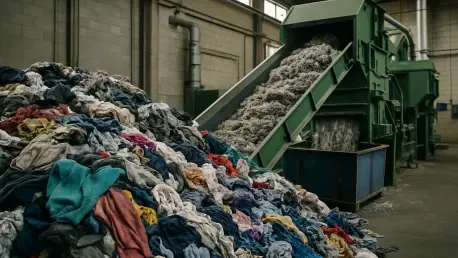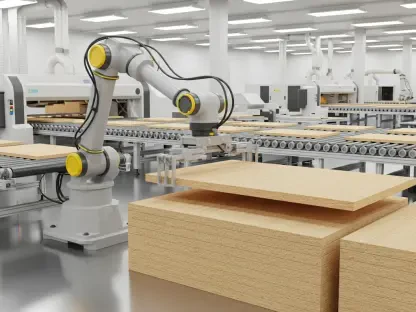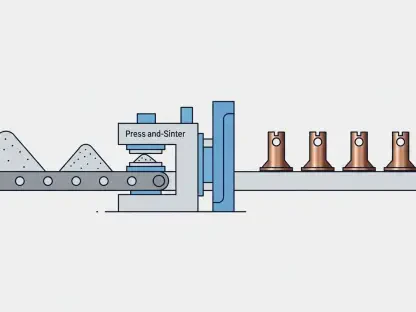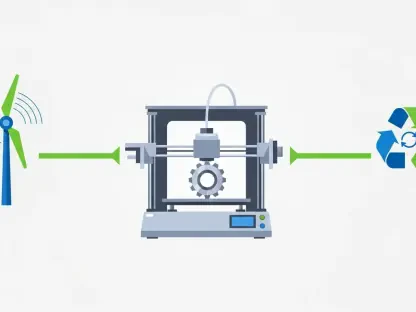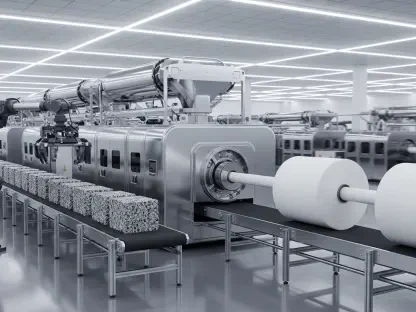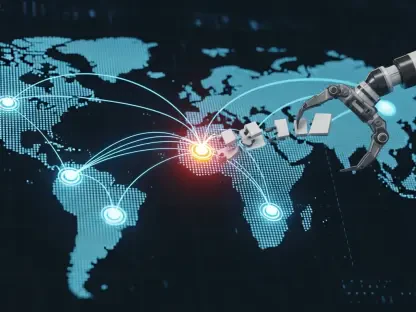Every year, Europe faces the daunting challenge of managing 10 billion kilograms of textile waste, a staggering figure that translates into a potential market worth billions of euros at a value of 2 to 3 euros per kilogram, presenting not just an environmental burden but a remarkable economic prospect waiting to be harnessed. The transformation of textile waste into a viable industry could redefine sustainability across the continent while fueling economic growth. Far beyond simply addressing a waste problem, this emerging sector promises to create jobs, drive innovation, and establish Europe as a global leader in circular economy practices. The discussion around textile recycling reveals a complex interplay of technology, policy, and collaboration, all of which are crucial to unlocking this billion-dollar potential. As the industry stands at a pivotal moment, the focus shifts to how Europe can turn this challenge into a thriving opportunity for future generations.
Unlocking a Massive Economic Potential
The scale of textile waste in Europe is both a pressing issue and a gateway to significant economic gains. With an estimated market value reaching into the billions, this sector holds the promise of reshaping entire industries. Experts suggest that the volume of waste could support the establishment of a vast network of recycling facilities, creating a robust infrastructure for processing discarded materials. Research Professor Ali Harlin from VTT Technical Research Centre of Finland highlights the possibility of building five to ten chemical recycling plants, supported by dozens of mechanical fiber processing units. This vision underscores the potential for large-scale impact, turning what was once considered trash into a valuable resource. The economic ripple effects could be profound, fostering new business models and revitalizing regions through job creation and industrial growth, all while addressing a critical environmental concern with innovative solutions.
Beyond the raw numbers, the economic potential of textile recycling lies in its ability to integrate into existing markets while creating new ones. The transformation of waste into reusable materials can reduce dependency on virgin resources, offering cost savings for manufacturers and promoting sustainability. This shift could attract significant investment, as businesses recognize the dual benefits of profitability and environmental responsibility. Moreover, the development of recycling infrastructure could position Europe as a hub for green technology, drawing global interest and partnerships. The challenge lies in scaling these efforts to match the volume of waste, ensuring that the systems put in place can handle the diversity and quantity of materials discarded annually. By capitalizing on this opportunity, Europe stands to not only clean up its waste but also build a resilient economy that prioritizes circularity and innovation over traditional linear models of production and disposal.
Pioneering Technological Solutions
Technological advancements are at the heart of transforming textile waste into a valuable commodity, particularly for dominant materials like cotton and polyester. Innovative companies in Finland, such as Infinited Fiber Company, are leading the charge by developing methods to create new fibers from recycled textiles, breathing fresh life into discarded garments. Mechanical recycling, which involves shredding textiles into reusable fibers with minimal processing, proves effective for higher-quality waste that retains structural integrity. On the other hand, chemical recycling tackles more degraded or low-quality materials by breaking them down to their basic polymer or monomer levels for reconstitution. These dual approaches ensure a comprehensive strategy for managing diverse waste streams, maximizing the potential for reuse while minimizing environmental impact through cutting-edge processes.
The applications of recycled textiles extend far beyond traditional clothing, showcasing the versatility of these technologies. Recycled fibers are increasingly used in nonwoven fabrics, wind turbine blades, and vehicle insulation, demonstrating their industrial relevance. Even more surprising is their incorporation into construction materials like concrete and asphalt, where they enhance durability and structural properties. Such diverse end-uses expand the market for recycled textiles, creating demand across multiple sectors and reinforcing the economic case for investment in recycling infrastructure. However, the success of these technologies depends on continued innovation to address complex material compositions and improve efficiency. As these methods evolve, they pave the way for a broader acceptance of recycled materials in mainstream production, potentially revolutionizing how industries approach sustainability and resource management.
Navigating Regulatory Hurdles
Despite Europe’s progressive stance on sustainability, regulatory challenges pose a significant obstacle to scaling textile recycling efforts. The European Union has taken steps toward enforcing producer responsibility through revisions to the Waste Framework Directive, aiming to hold textile companies accountable for managing their products’ end-of-life impact. However, progress on these policy updates remains frustratingly slow, delaying the systemic changes needed to boost recycling rates. Experts like Ali Harlin emphasize that without robust and timely regulations, the industry will struggle to achieve meaningful improvements in waste management. The gap between technological capability and policy support creates a bottleneck, hindering the adoption of recycling practices that could otherwise flourish under a more defined legal framework.
Addressing these regulatory roadblocks requires a concerted effort to align policy with industrial and environmental goals. Current delays in legislation risk stifling innovation and discouraging investment, as businesses await clearer guidelines on compliance and incentives. The concept of producer responsibility, while promising, needs specificity to ensure fair implementation across diverse markets. Additionally, harmonizing regulations across member states could prevent disparities that might undermine a unified recycling ecosystem. The urgency to resolve these issues is heightened by the growing volume of textile waste, which demands immediate action to prevent further environmental degradation. By prioritizing swift and effective policy reform, Europe can create an enabling environment where technology and industry converge to tackle waste challenges head-on, setting a global standard for sustainable practices.
Confronting Material and Market Dynamics
The complexities of textile materials present a formidable challenge to recycling initiatives, exacerbated by the dominance of ultra-fast fashion. This trend floods the market with low-quality, mixed-material textiles that are often uneconomical to process due to their short lifespan and intricate compositions. Sorting and separating these materials require advanced technologies and significant labor, driving up costs and reducing viability. The throwaway culture perpetuated by fast fashion stands in stark contrast to the principles of circularity, making it a persistent barrier to achieving high recycling rates. As a result, much of this waste ends up in landfills or incinerators, negating the potential for recovery and reuse in a sustainable system.
In contrast, certain sectors offer a more promising outlook for recycling due to better material management practices. Workwear, for instance, typically involves durable fabrics with well-documented compositions, facilitating easier processing. Principal Scientist Pirjo Heikkilä notes that the lifecycle management of workwear—where materials are tracked and used over extended periods—creates a more favorable scenario for recycling compared to consumer fashion. This disparity highlights the need for targeted strategies that prioritize high-value waste streams while addressing the challenges posed by low-quality textiles. Encouraging design for recyclability and promoting sustainable consumption patterns could shift market dynamics, reducing the burden of fast fashion and aligning production with recycling capabilities for a more balanced approach.
Building a Collaborative European Ecosystem
Tackling the textile recycling challenge demands a unified approach that transcends national boundaries, as no single country possesses the scale to address this issue alone. A pan-European ecosystem offers the most viable solution, leveraging regional strengths to create a cohesive network. Northern and Western Europe, with their advanced technological capabilities, can drive innovation in recycling methods, while Eastern and Southern Europe contribute significant manufacturing expertise. Such collaboration could reposition parts of the textile production chain back to the continent, enhancing local economies and reducing reliance on global supply chains. This collective effort is essential for building the infrastructure needed to process billions of kilograms of waste effectively.
The benefits of a collaborative framework extend beyond logistics to include shared knowledge and investment in recycling technologies. By fostering partnerships across borders, Europe can accelerate the development of both mechanical and chemical recycling plants, ensuring a comprehensive approach to waste management. This synergy also opens opportunities for policy alignment, creating consistent standards that support industry growth. Additionally, a united front can amplify Europe’s influence in global sustainability discussions, setting benchmarks for other regions to follow. The vision of a continent-wide network, as advocated by experts like Ali Harlin, underscores the transformative potential of collaboration, promising not only environmental gains but also economic revitalization through a reinvigorated textile sector.
Charting the Path Forward
Reflecting on the journey of textile recycling in Europe, it becomes evident that a monumental opportunity has been recognized to convert billions of kilograms of waste into substantial economic value. The groundwork laid by technological breakthroughs in mechanical and chemical recycling has already shown tangible results, with diverse applications emerging across industries. Yet, the hurdles of regulatory delays and the pervasive impact of fast fashion have slowed the pace of adoption, revealing gaps in the system that need urgent attention. The disparity between sectors like workwear and consumer fashion has highlighted the importance of tailored strategies, while the call for pan-European collaboration has echoed as a critical step toward scalability. Moving forward, the focus must shift to actionable solutions—accelerating policy reforms, incentivizing sustainable design, and investing in a cross-border recycling network. These steps promise to solidify Europe’s position as a pioneer in circular economy practices, turning past challenges into a foundation for future success.
